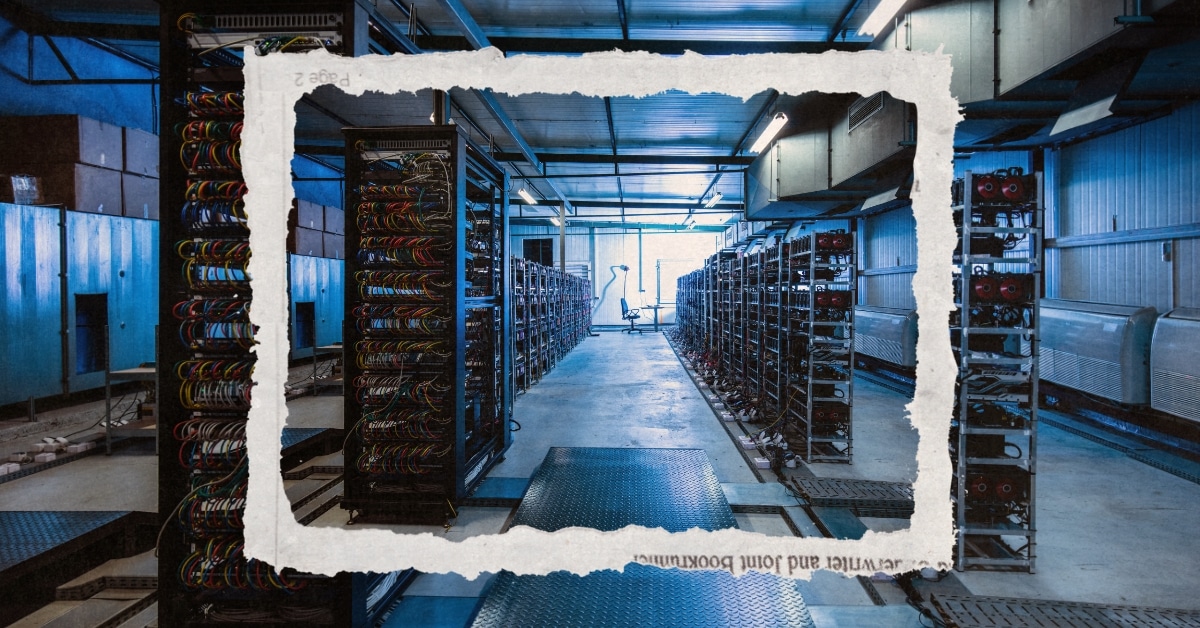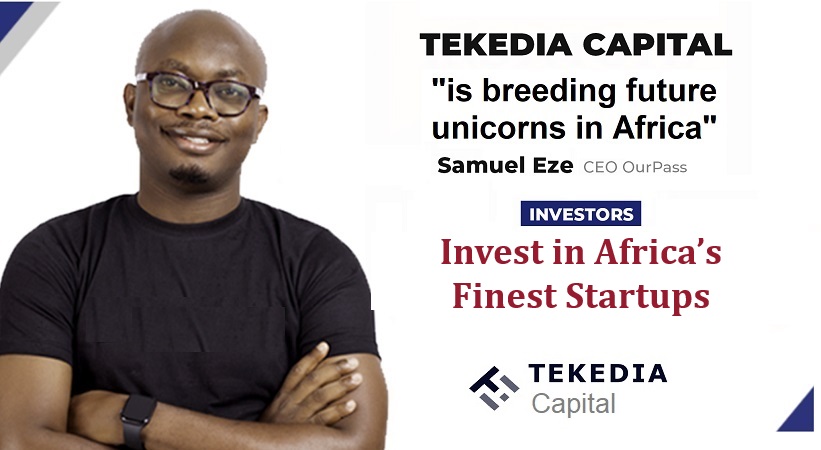News
Digital Assets/Cryptocurrency – The CPA Journal

Information about the panelists
Thanks for reading this post, don’t forget to subscribe!
The first panel of the afternoon, “Digital Assets/Cryptocurrency,” focused on what auditors need to know about these cutting-edge, interconnected technologies. The panel consisted of Michele Gonzalespartner, EY; Sean Principe, partner, Crowe; AND Jamiel Sheikh, founder, Scifn. It was moderated by Amy Steele, partner, Deloitte. The comments and opinions expressed at the conference and reproduced here represent the opinions of the speakers and not necessarily those of their employers or affiliated institutions.
* * *
The past few years have seen many new developments and growth in the digital asset ecosystem, began moderator Amy Steele, partner at Deloitte. She asked Jamiel Sheikh, founder of Scifn, about the current state of the crypto space. While she noted that there continues to be a compressed cycle of boom and bust in the digital asset space, “certain use cases, certain trends are emerging. … The ability to instantly move dollars through stable coins is becoming an important use case.”
“We have also had negative news in the digital assets sector,” Steele said. “We’ve seen Sam Bankman-Fried convicted for fraud and the collapse of FTX… We’ve also seen a lot of regulators speaking out, both on the enforcement side, but also about potential new laws.”
An emerging regulatory landscape
“Part of the evolution of the space is the demand for clearer and more comprehensive regulation,” said Michael Gonzales, partner at EY. He noted examples around the world and said that “here in the United States, it’s about making sure that you have a stable coin issuer that has said, ‘I’m going to create a token and I’m going to take US dollars, I’m going to put them in safe investments, whether they’re cash at banks or the US Treasury, and I will have enough of these assets to back every token I issue.’ If you do this particular type of business and make those claims to your customers, it lends itself very well to a regulatory framework that says, “Are you doing what you say you’re doing?”
Gonzales noted that different forms of regulation may be needed for stable coins with different designs. He gave the example of the fact that in New York, there has been regulation by the New York DFS of reserve-backed stablecoins for more than a year. “I think there has been recognition at the federal level that this framework seems to make a lot of sense.”
“The AICPA Digital Assets Working Group has been working on a set of criteria for running third-party attestation commitment reports that basically say, ‘Yes, the assets are there as of a particular balance sheet date and are equal to or greater than tokens issued on the blockchain,” Gonzales explained. “The other type of attestation, or third-party report that was discussed, is called ‘proof of reservations.’ This is the term of art that has taken hold in the industry; I personally don’t like it. I think it kind of puts the cart before the horse.
Gonzales believes retail participants are interested in knowing whether their cryptocurrency provider is making valid claims; the question is how to prove it. “This is where I think some terminological confusion arises: what is a custody certificate? Is it a test? And the word ‘audit’ will start to get thrown around, and you’ll start to create some gaps in expectations, whether intentionally or not.” He noted that there is state-level legislation requiring some sort of custodial attestation, and federal lawmakers question whether that makes sense in a federal framework.
“Part of the evolution of the space is the demand for clearer and more comprehensive regulation.”
—Michael Gonzales
Sean Prince, partner at Crowe, noted that as the digital asset ecosystem evolves, use cases become clearer and it becomes a question of customer acceptance by companies. “It is very important for the clients we take on in this space to understand which regulatory frameworks, which regulations and which regulators affect their organisation.”
Steele took a step back to ask what “evidence of reservations” is. Sheikh said that “the central question that the reserve test seeks to answer is: ‘Do you have enough assets to support your liabilities?’ … Proof of reserves is an attempt to bring the two worlds together to demonstrate that assets on the blockchain are sufficient to meet liabilities that might exist in a centralized entity or bank account. Its mechanics are slightly technical, but I think every auditor and every accountant needs to understand the mechanics, because now there is a hemorrhage between technology and business.”
Gonzales added that it is worth highlighting what institutional investors have done in terms of holding their institutional custodians accountable. “One of the things we’ve seen over the last three years or so is the proliferation of SOC 1 and 2 reports from institutional custodians. … The reports were helpful in providing both the institutional investor and their auditor a window into how the institutional custodian actually works: What are their controls? How they see different risk objectives and how they address them: from cryptographic private key security to reconciling transactions and balances on the blockchain.” Gonzales noted that some institutional investors will pay a premium to have a separate account around which they can layer risk own monitoring controls; however, it is a challenge to extend this approach to smaller retail customers.
Steele addressed SAB 121, the SEC’s recent guidance regarding entities’ responsibilities to safeguard their customers’ digital assets. Prince said practitioners should inquire about the SEC staff’s intentions.
“What we quickly learned was that this was a broader issue than contractual obligations. We were talking about SAB 121 applying to people who didn’t necessarily have a legal or contractual obligation to safeguard someone else’s property,” Prince explained. “You have to look beyond contractual legal obligations and also think about the customer’s perception.”
Prince described conversations he had with bank clients who were considering offering their customers the opportunity to trade cryptocurrencies. Even if the bank were to partner with a third party to manage the technology infrastructure, if customers were to suffer losses due to a cyber attack they would hold the bank responsible. This perception would likely exist regardless of contractual obligations, and perhaps even if the bank did not have a direct line of cryptocurrency custody.
“For those entities that do not apply the SAB, we always think through the lens of potential liability,” Gonzales added. “Putting it on the balance sheet can provide more technical discipline around scoping, and some other things could pose a risk. The evaluation becomes a little more precise. Probably the only statement that stands out is that you now have to value it because it’s on the balance sheet. … even if you are just a custodian who doesn’t normally transact or trade, you need to try to get fair value for digital assets.”
In response to a question about the rating, Prince noted that the FASB is expected to issue a final standard soon. [Editors’ Note: On Dec. 13, 2023, FASB issued ASU 2023-07, Intangibles—Goodwill and Other—Crypto Assets (Subtopic 350-60).] Prince said the standard will allow the measurement of the fair value of holdings in certain crypto assets. “This is a situation where preparers, practitioners and investors all agree that fair value accounting is a better answer for holdings that fall within the scope of the standard.” He also noted, however, that this will raise complex questions about scope and evaluation.
Worlds colliding
Sheikh said he advises both large institutions and individual “dark” traders, and noted that these two different worlds are colliding in a way that is becoming political. The original crypto ethos of “I will control my own money, a self-sovereign currency” led major banks to create permissioned blockchain systems with publicly identifiable parties. “The world of stable coins is emerging from the shadows into a regulated world, and it’s dark and unclear.”
“Then on a technical level, which will become a business problem, which will become an auditing and accounting problem, you have these fragmented pools of liquidity that are growing globally,” he said. While banks may attempt to fill this liquidity, this will raise questions, especially in cases where the counterparty is hidden, making disclosure impossible.
“When we talk to clients, customers, central banks, regulators… everyone is trying to figure it out,” Gonzales summed up. “Where does this leave us? I think that remains to be seen.”
The discussion moved to the AICPA’s Digital Assets Working Group. Prince said the group has arrived at a result within reach, “so right now we are spending a lot of time updating the Q&A to make a distinction between those that will be accounted for as intangible assets and those that will be subject to Guidance to FASB’s fair value measurement. We are also thinking about some of those items that FASB has excluded from its standards.” He gave the examples of RAP tokens and transaction costs for obtaining digital assets.
“This is a situation where preparers, practitioners and investors all agree that fair value accounting is a better answer for holdings that fall within the scope of the standard.”
—Sean Prince
The future of cryptocurrencies
“I think what we will start to see is the convergence of artificial intelligence and cryptocurrency,” Sheikh said. “In many ways, generative AI will probably do what Crypto wanted it to do, in the sense that I can use generative AI to optimize my portfolio and then have this self-sovereign finance. …if I am able to trade cryptocurrencies with generative AI suggestions, signals and indicators, then perhaps I am in a different world.”
“I’m curious what the odds are that FASB will take charge of something other than owning crypto assets,” Prince said. The FASB is trying to hold another consultation on the agenda, “so it will be interesting to see if cryptocurrencies can make it this time.”
“I will say that regulatory clarity, all the time, as well as regulatory adoption or acceptance by incumbents, will serve to support accelerated institutional adoption,” Gonzales said. He added that traditional financial players have been “sitting on the sidelines, waiting for clarity, and I think once it comes, they will seriously explore the use cases that Jamiel was referring to earlier.”
Steele said his final thoughts are a hope for the future: “There’s this healthy dialogue as technology advances, and we’re learning a new thing every day and trying to figure out how we can test that. I hope that that dialogue and collaboration continues throughout the profession, with preparers, auditors, audit committees, standard setters and regulators, all working together as we try to figure out how to protect investors and also recognize all the technological advances in this space.”
News
US Cryptocurrency Rules Delayed by ‘Never-Ending’ Lawsuits

Ripple CEO says cryptocurrency industry still seeking regulatory clarity from US
Speaking to Bloomberg News on Wednesday (July 17), Author: Brad Garlinghouse he said America is behind behind other countries which have already adopted cryptocurrency regulations.
“What we’re seeing, where it’s the UK, Japan, Singapore… even the European Union, more than two dozen countries have come together to provide a framework for cryptocurrency regulation,” Garlinghouse said.
“It’s frustrating that we as a country can’t get that regulatory framework in place. And instead, we have this never-ending lawsuit coming from the SEC that doesn’t really address the problem.”
Ripple has been the target of some of these legal disputes. Securities and Exchange Commission (SEC) sued the company in 2020, accusing it of conducting a $1.3 billion operation offering of unregistered securities tied to its XRP token.
However, last year a judge ruled that only Ripple’s institutional sales of XRP, not retail sales, violated the law, a decision widely seen as a victory for the cryptocurrency industry.
As PYMNTS noted at the time, that ruling has “far-reaching repercussions impact across the digital asset ecosystem, which has long maintained that its tokens do not represent securities contracts.”
However, Garlinghouse told Bloomberg on Wednesday that the company cannot wage multimillion-dollar legal battles over each token.
He spoke to the news agency from the Republican National Convention in Milwaukee, where the party is backing the candidacies of former President Donald Trump and Ohio Sen. J.D. Vance, both of whom are considered pro-cryptocurrency.
But Garlinghouse argued that cryptocurrencies “should not be a partisan issue,” and noted that he had recently attended a conference in Washington that included Democrats, including White House officials.
“I think they were there, listening to the industry… it was refreshing to start having that conversation,” she said.
President Joe Biden earlier this year he vetoed a measure which would have ended the SEC’s special rules for crypto-asset custodians. This legislation was supported by both the digital asset industry and the banking industry.
Ripple early this year donated $25 million to the cryptocurrency industry’s super PAC Fair Smoothiewith Garlinghouse stating at the time that such donations would continue every year, as long as the industry had its detractors.
Second Open SecretsWhich monitor spending For campaigns, the PAC has spent $13.4 million this year, much of it to help defeat Rep. Katie Porter’s (D-Calif.) U.S. Senate campaign.
News
The Future of Cybersecurity in the Cryptocurrency Industry

The cryptocurrency space has had a tumultuous journey, with its fair share of ups and downs. As we look to the future, one area that remains a constant focus is cybersecurity. The digital nature of cryptocurrencies makes them inherently vulnerable to cyber threats, and as the industry evolves, so does the landscape of potential risks.
In 2022, the cryptocurrency market faced significant challenges, with over $2 trillion in market value lost. This event served as a wake-up call for the industry, highlighting the need for robust cybersecurity measures. The future of cryptocurrency security is expected to see a shift towards more regulated and established institutions taking the reins of crypto technology and blockchain infrastructure.
The decentralized nature of cryptocurrencies offers numerous benefits, such as transparency and financial inclusion. However, it also introduces unique security challenges. The risk landscape is filled with threats such as hacking, phishing, ransomware attacks, malware, and social engineering. These threats not only lead to financial losses, but also damage the reputation and trust within the cryptocurrency ecosystem.
Mini-MBA Tekedia edition 15 ((September 9 – December 7, 2024) started recordings; Register today for discounts reserved for early bird customers.
Tekedia AI in Business Masterclass Opens registrations Here.
Join the Tekedia Capital Syndicate and IInvest in Africa’s best startups Here.
The decentralized nature of cryptocurrencies offers many benefits, but it also presents unique security challenges. Cyber risks such as hacking, phishing, and ransomware pose threats to the integrity of digital assets. The infrastructure that supports cryptocurrencies is not immune to vulnerabilities, including smart contract flaws and exchange hacks.
To address these vulnerabilities, the infrastructure that supports cryptocurrencies must be strengthened. Smart contract vulnerabilities, exchange hacks, wallet breaches, and flaws in the underlying blockchain technology are significant concerns that must be addressed to ensure the security and integrity of digital assets.
As cybercriminal tactics and techniques become more sophisticated, the cryptocurrency industry must stay ahead of the curve. The future will likely see more targeted attacks, exploiting weaknesses in infrastructure, networks, and human factors. This requires a proactive and multifaceted approach to cybersecurity.
To mitigate these risks, several measures must be adopted:
Strengthening security measures: Developers, exchanges, and wallet providers must improve security protocols, use strong encryption, implement multi-factor authentication, and conduct regular security audits.
Education and awareness: Users should be educated on best practices for protecting their digital assets, including using strong passwords, recognizing phishing attempts, and using hardware wallets for secure storage.
Looking ahead, the cryptocurrency industry is expected to see an increased focus on robust security measures. Blockchain projects and exchanges are likely to invest in advanced encryption techniques and decentralized storage solutions to protect user assets. The future impact of cyber risk on cryptocurrencies will depend on the collective efforts of stakeholders to address vulnerabilities and strengthen security measures.
Collective efforts by stakeholders in the cryptocurrency space are crucial to address vulnerabilities and strengthen security measures. While challenges persist, advances in cybersecurity technologies and practices offer hope for a more secure and resilient cryptocurrency ecosystem.
The future of cybersecurity in the cryptocurrency industry depends on finding a balance between innovation and regulation. It requires a collaborative effort from all parties involved, from developers to end users, to create a secure environment that fosters trust and growth in the industry. As we move forward, it is critical that lessons learned from past events guide the development of stronger security measures, ensuring the longevity and stability of cryptocurrencies as a vital part of the modern economic toolkit.
Like this:
Like Loading…
News
Bullish XRP and RLBK price predictions rise, outpacing the broader cryptocurrency market, prompting Shiba Inu holders to switch!

Bitcoin’s one-week surge from $60,000 has pushed other cryptocurrencies into an uptrend. However, for many altcoins, this trend has been temporary. Altcoins such as XRP and Shiba Inu (SHIB) have experienced price drops. However, Rollblock, a new altcoin on the Ethereum blockchain, has thrived during this period, attracting thousands of investors looking for long-term growth.
XRP’s Nearly 30% Growth Over Last Week Drops as Selling Pressure Increases
XRP is seeing further price decline as Ripple investors withdraw their profits from the token. The surge in XRP’s price to $0.64 in the past week has provided investors with a perfect opportunity to increase their returns in the short term. With the ongoing sell-off in XRP, XRP has jumped over 8% in the past day and is now trading at $0.59. However, analysts tracking XRP indicators predict that XRP could still extend its gains by over 30% in the coming weeks.
Shiba Inu (SHIB) marks its third consecutive day of losses
Shiba Inu (SHIB) is in a period of adjustment after a week of strong gains. In the last 24 hours, SHIB has seen a jump of over 7%, reflecting a natural market fluctuation. Analysts are observing a death cross on the Shiba Inu chart, which historically signals the potential for future opportunities as the market stabilizes. As investors explore new possibilities, some are diversifying into promising altcoins like Rollblock (RBLK) to strategically rebalance their portfolios and capitalize on the emerging trend.
Rollblock (RBLK) Up Another 7% as New Investors Join Pre-Sale
Rollblock (RBLK) has taken the cryptocurrency market by storm, having attracted investors from more popular altcoins like Shiba Inu (SHIB) and XRP. Rollblock’s growth is attributed to its utility in the $450 billion global gaming industry.
Rollblock aims to use blockchain technology to bridge the gap between centralized and decentralized gambling. With blockchain technology, Rollblock secures every transaction in its online casino, providing transparency and convenience to millions of players who are uncomfortable placing bets on other iGaming platforms.
This innovative use of blockchain technology in the industry has grown Rollblock to over 4,000 new users in less than two months. With plans to add sports betting, this number is expected to grow exponentially in Q3.
Rollblock uses a revenue sharing model that splits up to 30% of its casino’s weekly profits with token holders. This happens after Rollblock buys back $RBLK from the open market and uses half of it for rewards. The other half is burned to increase the price of $RBLK.
Rollblock price has seen four increases in the past month with $RBLK tokens now selling for $0.017. Analysts predict that at the current growth rate, Rollblock could increase by over 800% before the presale ends. For investors looking for a long-term token with growth potential, phase four is the best time to buy Rollblock before its price skyrockets!
Discover the exciting Rollblock (RBLK) pre-sale opportunities now!
Website:https://Rollblockpresale.io/
Social: https://linktr.ee/Rollblockcasino
No spam, no lies, just insights. You can unsubscribe at any time.
News
Texas Crypto Miners Turn to AI as Crypto Declines

As cryptocurrency mining becomes less profitable, Texas cryptocurrency mining companies are switching to supporting artificial intelligence companies.
Bitcoin miners, with their sprawling data centers and access to significant energy resources, are ideally suited for computationally intensive AI operations, and as cryptocurrency mining becomes less profitable, companies see this shift as a logical answer to their problems.
On Thursday, Houston-based Lancium and Denver-based Crusoe Energy Systems announced a multibillion-dollar deal to build a 200-megawatt data center near the West Texas city of Abilene to support advanced artificial intelligence applications such as medical research and aircraft design, CNBC reported. The plant represents the first phase of a larger 1.2 gigawatt project.
Lancium and Crusoe’s move into AI mirrors a broader trend among bitcoin miners. The combined market capitalization of the top U.S.-listed bitcoin miners hit a record $22.8 billion in June. Companies like Bit Digital and Hut 8 are diversifying into AI, with Bit Digital securing a $92 million annual revenue deal to supply Nvidia GPUs and Hut 8 raising $150 million to expand its AI data center.
But the growing popularity of these operations also presents challenges, particularly for the Texas power grid. Last month, the Electric Reliability Council of Texas announced that the state is expected to nearly double its energy production by 2030 to meet the high energy demands of data centers and cryptocurrency operations.
Lieutenant Governor Dan Patrick expressed concern about the projections.
“Cryptocurrency miners and data centers will account for more than 50% of the additional growth. We need to take a close look at these two sectors,” He wrote on Twitter/X. “They produce very few jobs compared to the incredible demands they place on our network. Cryptocurrency miners could actually make more money selling electricity to the network than they do from their cryptocurrency mining operations.”
Analysts predict significant growth in data center power capacity, which is expected to account for up to 9% of U.S. electricity consumption by 2030.
The operations also pose challenges for nearby cities. Earlier this month, TIME reported that a crypto-mining facility was seriously compromising the health of residents in the city of Granbury. TIME reported more than 40 people with serious health problems, including cardiovascular disease, high blood pressure and hearing loss. At least 10 of the residents needed to go to the emergency room or an urgent care facility.
The disturbances were caused by the extreme noise generated by the crypto-mining facility’s fans, which are used to keep the machines cool. While the proposed data center in Abilene would use liquid cooling systems, it’s still unclear whether the facility’s operations would pose a health risk to local residents.
-

 Nfts1 year ago
Nfts1 year agoShardLab Launches ZK-Based Tool for Digital Identity and NFT Vouchers
-

 News1 year ago
News1 year agoWallet recovery firms are abuzz as stranded cryptocurrency investors panic in the bitcoin boom
-

 Bitcoin1 year ago
Bitcoin1 year agoBitcoin, Ethereum, Solana and Cryptocurrency Markets Look Ready to ‘Send’ as Stars Align, According to Investor Chris Burniske
-

 Altcoins1 year ago
Altcoins1 year agoThree Altcoins Poised for Significant Growth in 2024: ETFS, OP, BLAST
-

 Altcoins1 year ago
Altcoins1 year agoAccumulate these altcoins now for maximum gains
-

 Nfts1 year ago
Nfts1 year agoOG Crypto Artist Trevor Jones Unveils Groundbreaking Collection of Ordinals | NFT CULTURE | NFT News | Web3 Culture
-

 Bitcoin1 year ago
Bitcoin1 year agoBillionaires are selling Nvidia stock and buying an index fund that could rise as much as 5,655%, according to some Wall Street analysts
-

 Videos9 months ago
Videos9 months agoKamala just won the boner! [Bad For Crypto]
-

 Videos1 year ago
Videos1 year agoLIVE FOMC 🚨 Could be CATASTROPHIC for Altcoins!
-

 News1 year ago
News1 year agoA Guide for Newcomers & Beginners – Forbes Advisor
-

 Videos1 year ago
Videos1 year agoAttention: a historically significant BITCOIN signal has just appeared!
-

 Videos1 year ago
Videos1 year agoSTOCK MARKET FUD! ⚠️ [Why This Is GREAT For Bitcoin Traders!]








